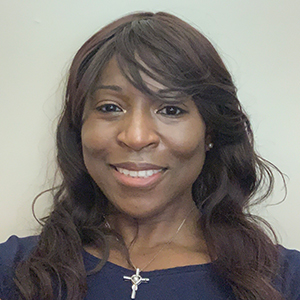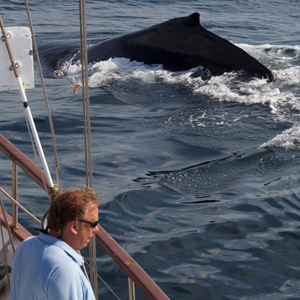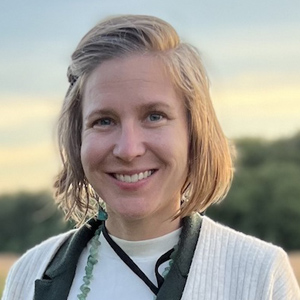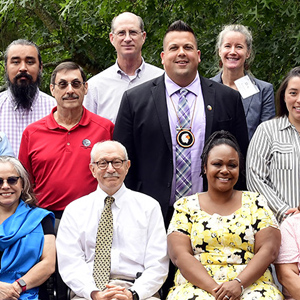 Rick Woychik, Ph.D., directs NIEHS and the National Toxicology Program. (Image courtesy of NIEHS)
Rick Woychik, Ph.D., directs NIEHS and the National Toxicology Program. (Image courtesy of NIEHS)For nearly three decades, Johnnye Lewis, Ph.D., has advanced Native American health by combining basic research, population-level studies, clear science communication, and robust partnerships with tribes. She is a longtime NIEHS grant recipient from the University of New Mexico (UNM), where she uses a transdisciplinary team approach to tackle issues related to environmental justice and health disparities, which affect many Indigenous communities.
Lewis is a professor in the UNM Community Environmental Health Program, which she launched in 1996 to address tribal concerns about harmful exposures involving abandoned uranium mines, milling sites, and waste piles left from Cold War weapons development. For example, there are more than 1,100 such locations in Navajo Nation, the largest Indigenous reservation. About 170,000 residents live in the territory, which includes parts of Arizona, Utah, and New Mexico. Toxic exposures there have been linked to increased risk of cardiovascular disease, diabetes, immune suppression, and other conditions.
To expand knowledge about such health threats to Navajo and other tribes, Lewis directs the UNM Metals Exposure and Toxicity Assessment on Tribal Lands in the Southwest (METALS) Superfund Research Program Center and the Center for Native American Environmental Health Equity Research, both of which were developed through NIEHS funding. She studies legacy contamination from the uranium mining waste, and that involves assessing complex mixtures of metals, such as uranium, arsenic, and lead. Her team also studies emerging exposures, including microplastics, and develops strategies to clean up pollution from the environment.
Recently, I spoke with Lewis about her efforts to address tribal health issues, effectively communicate findings, partner with communities in identifying research questions, and reduce exposures. In addition, I asked her to discuss how she became interested in such work and what inspired her to pursue a scientific career. It was an honor to talk with Lewis, and I am excited to share excerpts of our conversation, provided below.
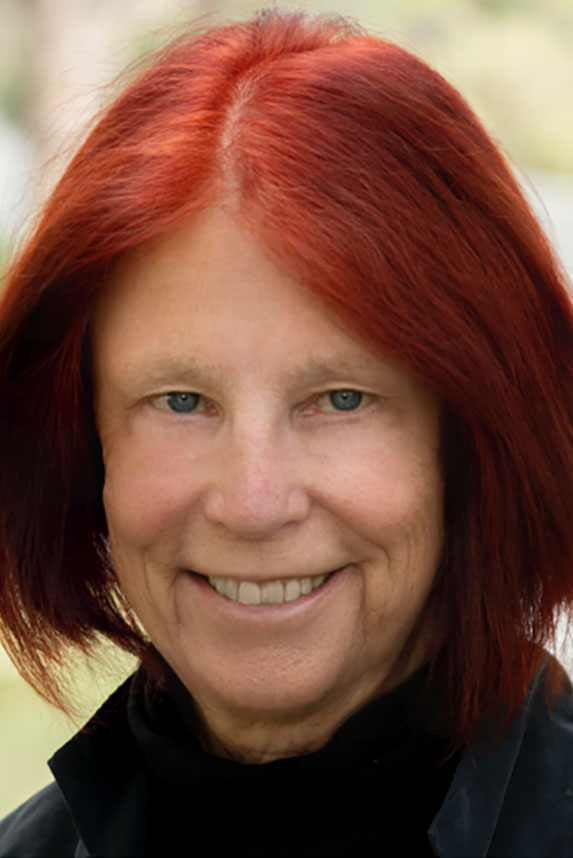 Lewis’s areas of specialty include toxicology, metal mixtures, Indigenous environmental health, and community-partnered research, among others. (Photo courtesy of Johnnye Lewis)
Lewis’s areas of specialty include toxicology, metal mixtures, Indigenous environmental health, and community-partnered research, among others. (Photo courtesy of Johnnye Lewis)Uranium mining and tribal contamination
Rick Woychik: Throughout the years, a major aspect of your work has involved studying tribal communities’ exposures to hazardous substances from Cold War-era uranium mining. Can you talk about what motivated you to conduct such research?
Johnnye Lewis: In the early 1990s, I was a consultant for the U.S. Department of Energy on the Uranium Mill Tailings Remedial Action [UMTRA; see sidebar] project, which was aimed at cleaning up contamination at thousands of old uranium mill-associated sites. Mill owners could join a federal program that would do their cleanup, and if they didn’t sign-up, they were stuck with any potential liability. I interacted with tribal communities, especially on Navajo, to assess their risk and determine whether there were unique routes of exposure that might occur and add to risk or alter clean up strategies.
One day, I was contacted by 20 communities from Navajo Nation that had a history of uranium mining and high prevalence of kidney disease. What was remarkable was that in their area, such disease occurred very early — at that time, it was not uncommon to see teenagers on dialysis. A doctor had talked with tribal members about uranium being a kidney toxicant, and this motivated them to seek help conducting research about whether uranium in unregulated water they were drinking was the cause of early onset and severity of kidney disease.
They had seen one of the early funding opportunity announcements on environmental justice from NIEHS, and they brought together a group of people they thought could help. They asked me to lead research in this area, and that’s what I’ve been doing ever since, thanks in large part to sustained support from NIEHS. Also, I’m proud that over the years, many of our researchers have been Native American. Their scientific talent, cultural awareness, and ability to build trusted partnerships have been vital.
Toxic metals, toxic trash
RW: Can you expand on the environmental threats faced by tribal communities and describe some of your team’s work to reduce exposures? My understanding is that we are talking about much more than uranium exposure.
JL: Yes, when we talk about exposures on tribal lands, we’re not talking about one substance but rather mixtures of toxic metals. Drinking water contamination due to the metals has been a longstanding issue. And in the decades since the mining and milling sites were in operation, these substances have degraded to nanoparticle size, making them easily moved by wind.
Our team also assesses volatile compounds and microplastics associated with burning trash. In some communities, there are no formal solid waste disposal systems, and people burn waste or the tribes in some cases create very large burn piles that smolder, creating low-temperature combustion over long periods.
Beyond those potentially harmful inhalation exposures, there are concerns about how such contamination might affect wildlife, livestock, and plant life. And we worry about what's happening with climate change. We're getting hotter, we're getting drier, and dust storms here are very frequent, increasing risk that pollutants will spread to more areas and affect more people.
Given these and other issues, we work to develop practical, low-cost tools and strategies that can reduce exposure risks and improve health. For example, we are currently assessing whether zinc supplementation can prevent DNA damage caused by exposure to arsenic and uranium, which can inhibit DNA repair enzymes. Preliminary results look very promising, and have also taught us a lot about exposures.
Also, our team is studying how fungi affect the movement and distribution of metals. We’re investigating whether manipulation of the soil microbiome can reduce uptake of metals in plants and water, which could benefit ecosystems and agriculture. We're doing controlled greenhouse studies to learn how the makeup of fungi in soil affects the movement of these metals. Our goal is to develop a bioreactor, test it in the lab, and then take it to a community setting.
One unique aspect of our work is that we listen to communities’ concerns and then respond to their needs through research. For example, some of our investigators were interested in microplastics, and then tribal members raised the issue of burning trash pits, so we knew that expanding in that direction would be a good fit. Our tribal partners from communities are partners in research design and implementation.
Science communication through art
RW: You received the Society of Toxicology’s 2021 Public Communications Award in recognition of your efforts to develop inclusive science communication strategies for underserved tribal communities. Can you discuss an example of your work in this area?
JL: A while back, at a community sheep roast for the Center for Native American Environmental Health Equity team, we shared complex data during a presentation, using what we thought were simple graphics. One of our external advisors stopped us and asked tribal members in attendance whether they understood the information on our PowerPoint slides.
Every head in the room went down.
That feedback was valuable and embarrassing, but it made us laugh at ourselves and reevaluate our assumption that community members understood us just because some asked questions. This began a conversation on how we could make our presentations better. Community members told us that they are visual learners and that if we could use art to share our findings, our outreach would likely be much more effective.
Soon after, we started an artist-in-residence program and hired Mallery Quetawki, who is a very gifted Zuni painter. At the time, we thought she would be with us for just one year. Well, about five years later, Mallery is still working with us, and she has been an incredible asset to our team. In fact, we are developing a program where she will be mentoring other artists in science translation.
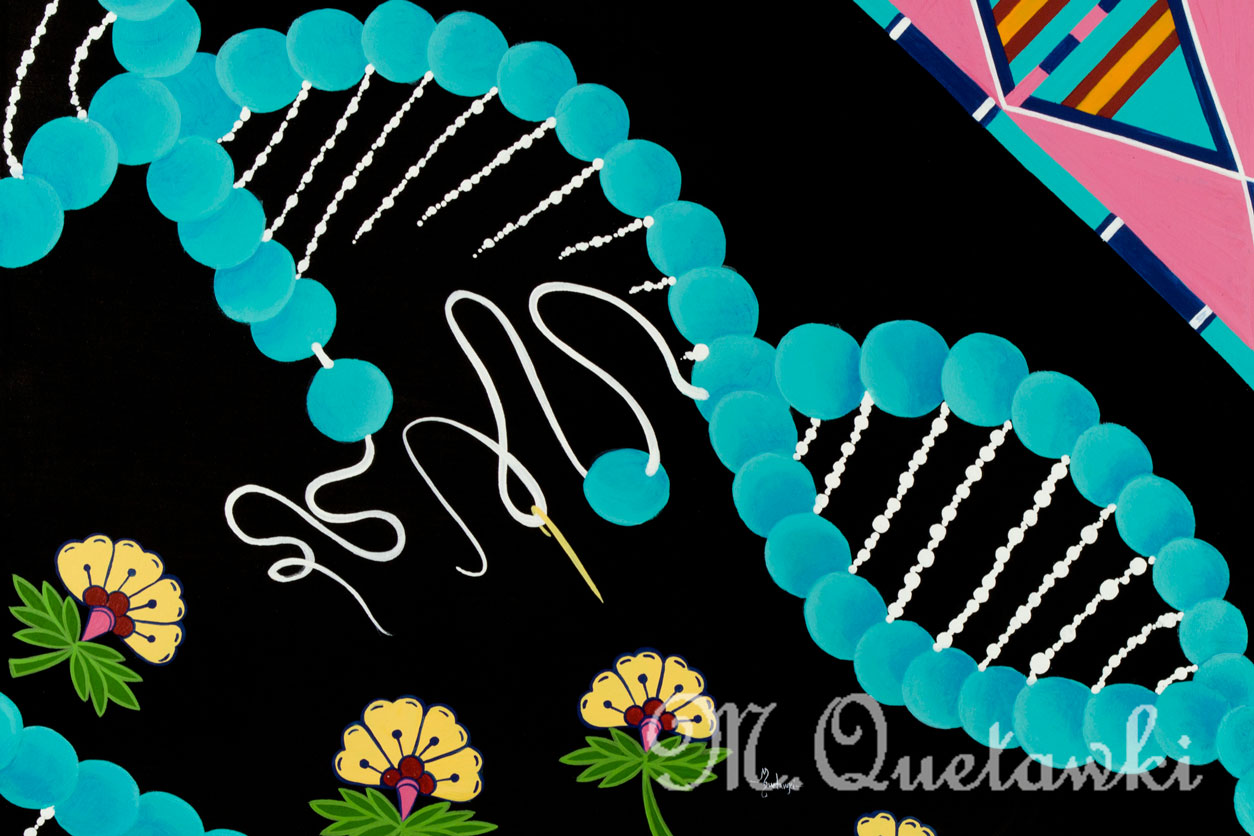 “This image shows how the process of DNA repair, aided by zinc, is like restringing a traditional beaded necklace that is broken,” wrote Mali Velasco in a 2021 Environmental Factor article describing Quetawki’s art. “The flower design symbolizes the idea of regrowth.” (Image courtesy of Mallery Quetawki)
“This image shows how the process of DNA repair, aided by zinc, is like restringing a traditional beaded necklace that is broken,” wrote Mali Velasco in a 2021 Environmental Factor article describing Quetawki’s art. “The flower design symbolizes the idea of regrowth.” (Image courtesy of Mallery Quetawki)There are many cultural differences between tribes and researchers, but we’ve found that art can transcend them. Quetawki’s work resonates with tribes because she references their traditions and cultural values. She helps community members better understand scientific concepts, and her paintings enable us to see our own research from new perspectives.
Ultimately, our science relies on strong relationships with community partners. And those relationships are built on trust, communication, and humility on the part of scientists. By first listening to tribal members and understanding their needs, we can enhance our research and its impact, and empower communities with knowledge they need to improve their health.
(Rick Woychik, Ph.D., directs NIEHS and the National Toxicology Program.)





